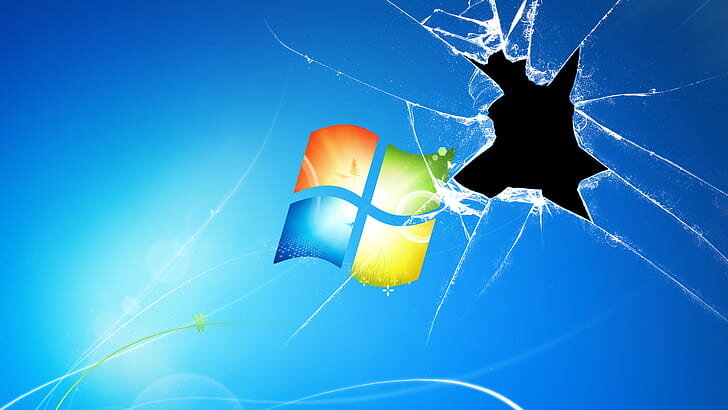Microsoft is the Problem, Not the Solution
Microsoft has a proven track record of failure: updates prone to harm systems, vulnerabilities that allow ransomware to exist, unacceptable online compromises and downtime … nobody can trust Microsoft products in their small business.
On Wednesday July 15, 2020 - across the world - millions of Microsoft customers went to open Outlook and it crashed. Completely. Users couldn’t access their email using their Windows computer at all - not unless they bypassed Outlook and went online to use a web-based version of Outlook.
Microsoft eventually posted a server-side fix for the issue, rolling it out around noon PST. This is to say that millions of people - on tax day in the United States, no less - lost nearly a day’s worth of productivity.
And Microsoft just shrugged.
In February 2020, Microsoft released security updates that deleted the private data of Windows users. This came on the heels of over four years of disruptive updates that spoiled industry confidence and forced Microsoft to try and explain themselves; even an ex-Microsoft employee described the quality control problems at Microsoft as being systemic.
And Microsoft just shrugged.
So how about - in January 2019 - when Microsoft Office365 was down for two whole days?
Yeah, Microsoft just shrugged.
Meanwhile, Microsoft’s Office 365 security is equally questionable. In 2020 alone, to date:
January 2020. Hackers use malicious apps to gain access to Office 365.
April 2020. An alert from US-CERT describing the vulnerability of millions of MsO365 users; more than one million compromised accounts per month.
May 2020. A hacking threat to Microsoft Teams was announced, threatening another 75 million users.
Microsoft just shrugged.
And finally, ransomware is a significant issue: attacks by aggressors who extort users by encrypting their data. Yet, Microsoft’s mediocre quality control is responsible for the most prominent malware of 2018-2020:
Cryptolocker. It exploits a vulnerability in the Windows platform.
Wannacry. It exploits a vulnerability in the Windows platform.
Cryptowall. It exploits a vulnerability in the Windows platform.
Locky. It exploits a vulnerability in Microsoft Word.
Petya. It exploits the file system of Windows.
Microsoft just shrugs.
One could ascertain that the problem is that Microsoft doesn’t give a hoot about its customers.
Others might suggest that Microsoft looks at systemic vulnerabilities as a marketing opportunity to convince users to upgrade or replace their computer systems.
Yet others could criticize Microsoft’s shoddy quality control.
Whatever the reason, Microsoft is chiefly responsible for the lack of security, quality, and confidence in their products and services.
It’s Microsoft’s inattention to these matters that put small businesses and their data at risk. Our computing platforms should be ever more resilient, more reliable, and more secure - every year - but Microsoft’s solutions prove the inverse.
It is my opinion that it would behoove any small business to seriously consider in what ways they could minimize the use of Microsoft’s products within their control.
And here’s the great news: there’s a ton of other options for small business that doesn’t involve Microsoft solutions. Ask me how.
Related Links:
2021.03.17. Microsoft Releases Emergency Patches to Allow Users to Print.
2021.03.06. Exchange Server Hack Morphs Into a Global Crisis.
2021.01.14. A Single Icon on your Desktop Can Corrupt Win10’s File System.
2020.12.24. Hackers Accessed Microsoft Cloud Customers Info Through 3rd Party.
2020.12.17. Microsoft 365 Was Hacked; The Government was Compromised.
2020.12.11. New Malware Can Infect 30,000 Windows Machines a Day.
2020.10.21. Windows 10 emergency update: US government just issued warning
2020.10.19. Disastrous Windows 10 update is reportedly breaking some PCs
2020.09.23. Windows Updates Appear to be Broken Again
2020.09.19. Homeland Security Urges Immediate Patching Against ZeroLogon Exploit.
2020.09.17. Microsoft 360 MFA is insecure and has been for years; fix coming in April 2021.
2020.09.05. .NET Used by Malware to Create Excel Docs That Bypass Security Checks.
2020.09.02. Windows Defender Can Be Used to Download Malware.
2020.09.01. New Windows 10 Update Could Leave Users Without an Internet Connection.
2020.08.30. Microsoft Leaves a Windows 10 Active Security Exploit Unfixed for 2 Years.
2020.08.27. Windows 10 Could Kill your SSD.
2020.08.20. Microsoft Makes it Harder to Disable Native AV Software.
2020.08.11. Windows 10 Error is Playing Havoc with User Passwords.
2020.08.07. A Old Microsoft Word Doc and a Zip File Can Hijack a Mac.
2020.08.02. Microsoft Edge is Malware.
2020.07.25. Hackers seizing on trust placed in popular Microsoft Office software.
2020.07.27. Opening and closing your laptop could be enough to crash Windows 10.
2013.07.11. Microsoft collaborated with NSA to allow access to email servers without warrant.
Working from Home? You Need a Computer Consultant.
Today more than ever, small businesses and home office workers need a reliable computer consultant to help them navigate computer problems. We recommend you get to know someone local who can help you when you need help.
In the age of COVID, everyone is making changes, particularly as it relates to the nature of work.
If you’re a knowledge worker operating out of your home office, you’re using computer and networking equipment that you’ve never had to really rely upon. Your home PC, your home router, your home wifi - these were devices of convenience.
Today, though, you’re relying on your network and computer equipment is a matter of making an income, running your business, and servicing your customers. In the past, a bit of jitter in watching Netflix wasn’t a big deal, but if you can’t complete a clean teleconference, you might not land that agreement. You need the same security, performance, and reliability out of your home network as your office network, and you need somebody to help you get there.
A computer consultant can help you with these problems. They’ve got real-world industry training and discipline that we can bring to the equipment found in your home office. The same practices and techniques that keep your office network safe can be applied to your home. It’s about enterprise computing at home office scale.
Computer analysis and endpoint monitoring
Antivirus, malware, and intrusion detection
Router inspection and firmware upgrades
Security analysis and application of best-practices to keep you safe
Disaster recovery and data backups
Work telephones and conferencing
Remote support and troubleshooting
Including all of this, a computer consultant can just give you good, practical advice. Things you should know about and be aware of.
If you believe that the COVID experience isn’t going to end any time soon, and that work-life balance is inexorably going to change one way or another, then establishing a good relationship with a local technical professional is your hedge against data loss, down-time, or critical failure. Get to know someone who works when you work, and can get you out of a tight spot when you really need them.
Just give us a call. And we don’t charge anyone to get to know how we can help them, so it’s not going to cost you anything to just open up a conversation.
R
How Does Google Drive File Stream Know it's Me?
An explainer for how Google Drive File Stream authenticates to Google to allow access to your Google Drive.
So yah - how does File Stream know to use your Google Drive?
Well, when it runs for the first time, Google Drive File Stream asks a G-Suite user to sign in.
The act of signing-in is the process by which File Stream is then authorized to access to the user’s Google Drive.
Once authenticated, File Stream will present a redirected drive with a My Drive folder labeled G: in Windows; it’ll be represented as a device within the Mac O/S.
The My Drive folder is the root of the user’s Google Drive and - generally - the content placed in My Drive is private to the user.
Where G-Suite Basic users will only see their own My Drive folder, G-Suite Business users would see their My Drive folder and their G-Suite domain’s Shared Drives (formerly known as Team Drives). Only the G-Suite Business license has access to Shared Drives.
When File Stream is active, it creates a runtime stub that appears in the system tray of a Windows computer; a small white and gray triangle near the computer’s clock displayed in the lower right side of the screen. On a Mac, File Stream’s runtime stub appears in the upper toolbar towards the right.
In both cases, the stub will look grayed-out if the user needs to sign in. Clicking on the stub will produce a login challenge that will re-authenticate File Stream. If the stub is blue then the user is currently logged-in.
The user’s credential is cached in the form of an oAuth token and is active for a period of time or until the token is revoked. Then the user would have to sign back in again. If the user rotates their G-Suite password, they would need to sign-in again to create a new oAuth token.
While logged in, the computer user has access to the Google Drive of the signed-in G-Suite user.
Hopefully they’re the same person! The person using the computer is using their account with File Stream and that login information is stored behind the Windows or Mac user account.
If not, the user will notice that the File Stream stub has an option to “switch user” or “disconnect” to reconnect File Stream under another user account.
File Stream cannot connect to multiple user accounts or Google Drives at one time.



